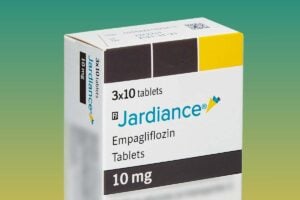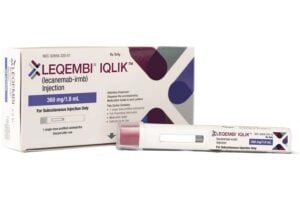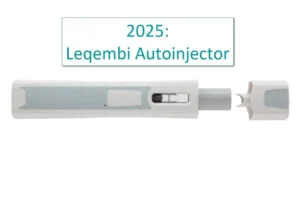What this study means for you
Families often ask: How much does Leqembi actually help? How soon? What changes should we expect in real life?
A new imaging study looked for early improvements in the brain’s waste-clearing system. It didn’t find measurable improvement in the first few months — but that’s completely consistent with what Leqembi is designed to do: slow decline, not reverse damage.
And when we place this imaging study alongside the major clinical trials, a realistic and hopeful picture emerges.
What the researchers measured — in plain English
Amazon Books & Videos
about Alzheimer’s and Dementia:
FREE Newsletter:
The team studied the brain’s “clean-up pathway,” sometimes called the glymphatic system. Think of it as the brain’s night-shift cleaning crew, washing away waste proteins such as amyloid.
They used a special MRI tool (DTI-ALPS) that measures how smoothly fluid moves along tiny channels near blood vessels.
You don’t need the technical name. For caregivers, it’s enough to think:
“Did the brain’s drainage system look any better after starting Leqembi?”
What the study found — simplified
After about 3 months of Leqembi, the MRI marker changed by less than 1%.
What does “less than 1% change” mean?
- Like checking your gas gauge twice and seeing the needle in the same place
- Like stepping on a scale a second time and seeing a tiny shift too small to notice
- Like looking at a room before and after cleaning and seeing no visible difference yet
This simply tells us:
“The brain’s waste-clearing system did not show early, measurable improvement on this MRI test.”
This is not a failure — it’s exactly what we expect from a drug designed to slow worsening, not restore damaged systems in a few weeks.
How effective is Leqembi? (The bigger picture)
When we step outside this small MRI study and look at the major clinical trials, we get clear percentages:
- 27% slower decline on the main clinical scale (CLARITY-AD trial, 18 months)
- 26% slowing on a key cognitive measure
- >70% reduction in amyloid plaque (biomarker studies)
- Over 4 years, about 69% of continuously treated patients showed no decline and even slight improvement
- About 56% actually improved from their starting point
But what do these numbers really mean?
Breaking those percentages down
- 27% slower decline means:
If someone normally worsens by 100 “units” in 18 months, with Leqembi they worsen by about 73 instead.
The disease continues — but more slowly. - >70% amyloid reduction means:
The drug clears plaque, but clearing plaque does not restore memory already lost. - 4-year stability/improvement numbers mean:
In early-diagnosed patients who stay on treatment, the disease’s downhill slope can sometimes flatten for long stretches.
Positive outcomes from THIS research
Even though the MRI marker didn’t improve, the study provides real benefits:
1. It confirms realistic expectations
Leqembi slows decline — it does not reverse Alzheimer’s.
This study reinforces that message clearly and honestly.
2. It helps scientists focus on long-term change
Some brain systems take many months or years to show improvement.
The researchers recommend longer follow-up — and that’s good for future progress.
3. It guides more personalized treatment
Knowing which brain markers change early and which don’t helps tailor future therapies and imaging tests.
4. It supports transparency
Families get honest information.
Scientists avoid hype.
Trust grows.
5. It contributes to the research puzzle
Every study helps clarify how Alzheimer’s works — and how treatments interact with different brain systems.
What this means for caregivers
Here are the big takeaways:
- Leqembi helps — but slowly.
It won’t reverse damage, but it can give more time at earlier stages. - Early MRI changes aren’t expected.
The brain’s repair systems move slowly; early scans often look the same. - Stay focused on the long view.
Clinical improvements often show up months later, not weeks. - Daily care is still the foundation.
Safe routines, sleep, calm evenings, gentle structure — these remain essential. - Talk with your neurologist about expectations.
Knowing what the medication can and can’t do leads to better decisions and less disappointment.
What to expect in the future
- Larger, longer studies
- Better biomarkers
- More personalized treatment pathways
- Clearer explanations for caregivers
- Continued progress in slowing the disease
Science is building step by step — and every study adds another piece.












Sorry, but this is an abysmal article. Leqembi is a monoclonal antibody, which means it has an affinity to bind with amyloid plaque. This triggers the body’s immune system to remove the offending material. This is a separate and distinct process from the glymphatic system. It is mildly interesting that Leqembi had no impact on the glymphatic system after 3 months of treatment. But as my Dad used to say, what does that have to do with the price of tea in China?
Then the real kicker, you note the statistics from the Phase 3 open-label extension that “Over 4 years, about 69% of continuously treated patients showed no decline and even slight improvement … About 56% actually improved from their starting point.” The article omits a key fact with these statistics: they came from a subgroup in the Phase 3 clinical trial for Leqembi with no/low amounts of tau as measured by a tau PET scan. So yes, those with no/low amounts of tau when the start Leqembi treatment might expect great results. But those starting with moderate/high amounts of tau should not expect to achieve these results. This is a startling omission from your article.
Hi David,
You make some very good points, and I appreciate the way you framed them. Thoughtful comments like yours genuinely raise the quality of this site.
Regarding the first paragraph of your comment, the issue you raise is addressed in the opening paragraph of the study. A link to this study appears at the end of this article and it is open-access, so you can check it out in its entirety. The authors of the study explain:
Alzheimer’s disease (AD) is characterized by the progressive accumulation of amyloid-β peptides in the brain parenchyma, and impairment of interstitial waste clearance via the glymphatic system is suggested as one contributing factor [1, 2]. Recently approved disease-modifying (DM) monoclonal antibodies, such as lecanemab, are expected to slow cognitive decline by improving amyloid β clearance [3–5]. Diffusion tensor imaging along the perivascular space (DTIALPS) index has emerged as a noninvasive surrogate marker suggested to be associated with glymphatic activity [6]. This index declines with normal aging and is significantly lower in patients with AD than in cognitively normal individuals [6–8]. Although DM therapy (DMT) may affect the DTI-ALPS index, no studies have examined longitudinal changes in the DTI-ALPS index following DMT initiation. Therefore, this study quantified the DTI-ALPS index in patients with AD before and 3 months after the initiation of amyloid-targeting DMT to generate provisional reference values for the longitudinal assessment of future DM-treated cohorts.
Regarding the second paragraph of your comment: while the subgroup you describe may indeed represent a select population that benefits more than the average patient from Leqembi, it’s no secret that two years after approval, the drug is still being administered to fewer than 1% of people with Alzheimer’s. In other words, only a small, highly selected subgroup has been approved for treatment so far, and the general population of typical patients is not yet being reached.
It seems reasonable—though I haven’t seen proof for or against this—to assume that the tiny subgroup receiving the drug is quite similar to the subgroup that benefited most in the trials. If Biogen and treatment centers are being extremely selective, it stands to reason they would focus on those most likely to show strong results. In these early days of such an expensive therapy, when demonstrating Leqembi’s value is essential, it makes sense that priority would go to patients most likely to exhibit maximum benefit. Therefore, one can deduce that it would be quite appropriate to use statistics from one of the subgroups that most benefited from Leqembi in trials.
As you noted, “those starting with moderate/high amounts of tau should not expect to achieve these results,” and it follows that such patients might not be first in line for treatment at this stage. Of course, this is not established fact—but to me it seems like a very plausible explanation.
Thanks again for raising these issues so thoughtfully. I appreciate the opportunity to explore them together.